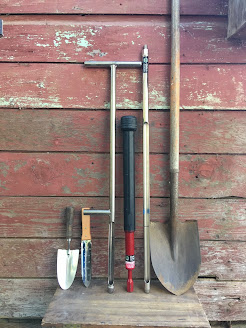Microbiology, Some of the events in microbiological history
Microbiology

Microbiology, a branch of biological science that deals with the study of microorganisms. The term
microbiology was given by French chemist Louis Pasteur (1822-95).
Microorganisms are living organisms that are too small to be visible with the naked eye and they are microscopic in size and most of them are unicellular some of them are multi cellular forms This includes bacteria, archaea, viruses, fungi, prions, protozoa and algae, collectively known as 'microbes'.
All life processes are performed within a single cell

These microorganisms which helps nitrogen fixation in plants which helps to increse soil fertility, some microorganisms acts as bio controlling agents in agricultural field.
Yeasts are used in the production of alcoholic beverages.
Some Bacteria’s are used in recombinant DNA technology to produce medicines.
Microorganisms are the main tools for the study of molecular biology genetic engineering.
By using microorganisms pharmaceutical industry has already produced several products such as insulin, interferon, some brain hormones, vaccines etc..
This discipline includes fundamental research on the biochemistry, physiology, cell biology, ecology, evolution and clinical aspects of microorganisms.
History of microbiology
History of microbiology starts before the invention of microscope. Anton Van Leeuwenhoek who first introduced microbes to the world
Anton Van Leeuwenhoek was a Dutch businessman and scientist in the Dutch science and technology. A largely self-taught man in science, he is commonly known as "the Father of Microbiology", and one of the first microscopists and microbiologists. Leeuwenhoek’s called these microorganisms as “animalcules”.
The thoughts of microorganisms comes when the humans are suffering diseases. Before 16th century they thought that “invisible” entities were responsible for decay and disease. At that time no instruments were available to view the microbes and to conform their presence or existence in nature. In 16th century microscope was invented.
The microscope is an instrument which magnifies the objects too small to be seen with naked eyes.
Some of the events in microbiological history
Varo and Columella in the first century BC postulated that diseases were caused by invisible beings (Animalia minuta) inhaled or ingested.
in 1546 by a physician Girolamo Fracastoro (1478-1553) of North Italy. He wrote a treatise- De contagione in which he said disease was caused by minute 'seed' or 'germ' and spread from person to person.
In 1658 Athanasius Kircher, 1st recognize the significance of bacteria and other microbes in disease
In 1665 Robert Hooke an English scientist used a simple lens that magnified objects approximately 30X and published MICROGRAPHIA, he gives the first reference in science to little boxes as 'cells'.
In1668 -Franceso Redi, demonstrate the fallacies in the spontaneous generation theory.
Von Plenciz (1762) suggested that each disease was caused by a separate agent.
In 1688 -Redi Publishes work on spontaneous generation of maggaot.
In 1786- Muller produces first classification of bacteria
In 1798- Edward Jenner introduces Cowpox vaccination for small pox.
In 1838- Theodor Schwann (german zoologist) and Mathias Schleiden (botanist) formulate the cell theory.
In 1857- louis Pasteur shows that lactic acid fermentation is due to a microorganism.
In 1861- louis Pasteur shows that microorganism do not arise by spontaneous generation.
In 1867- Lister publishes his work on antiseptic surgery.
In1869- Johann Meischer discovers nucleic acids.
In1876-1877 Robert Koch, german physician, demonstrate that anthrax is caused by Bacillus allthracis.
In 1881- Robert Koch cultures bacteria on gelatin.
In1882- Koch discovers tubercle bacillus.
In1885- Pasteur develops rabies vaccine.
In1892- D. Ivanovski provides evidence for virus causation of T.M.V
In 1897- Ross shows that malaria parasite is carried by the mosquito.
In 1906-August Wasserman develops the first serologic test. for syphilis.
In 1908- Paul Ehrlich becomes the pioneer of modern chemotherapy to treat syphilis.
In1928- Griffith discovers bacterial transformation
In1929- Alexandre Fleming, English bacteriologist discovers antibiotic penicillin from Penicillium notatum
In 1956- Watson & Crick propose the double helix structure for DNA
In1958- Lederberg makes discoveries concerning genetic recombination and the organization of the genetic material of bacteria.
In 1959- Korenberg & Ochoa awarded nobel prize for the discovery of enzyme which produces artificial DNA and RNA
In 1975- Kohler & Milstein develop technique for the production of monoclonal antibodies.
In 1982- Recombinant Hepatitis B vaccine developed.
In 1983-1984 - Gallo and Montagnier isolated and identified HIV virus and PCR chain reaction developed by Mullis.
1990- First human gene therapy testing begun
Still microbiological invention is going on in different field of microbiology
Some of the grate scientists who are working on microbiology is here
microbiology history
https://www.youtube.com/watch?v=kOH4qUzU8uo&t=25s







Comments
Post a Comment